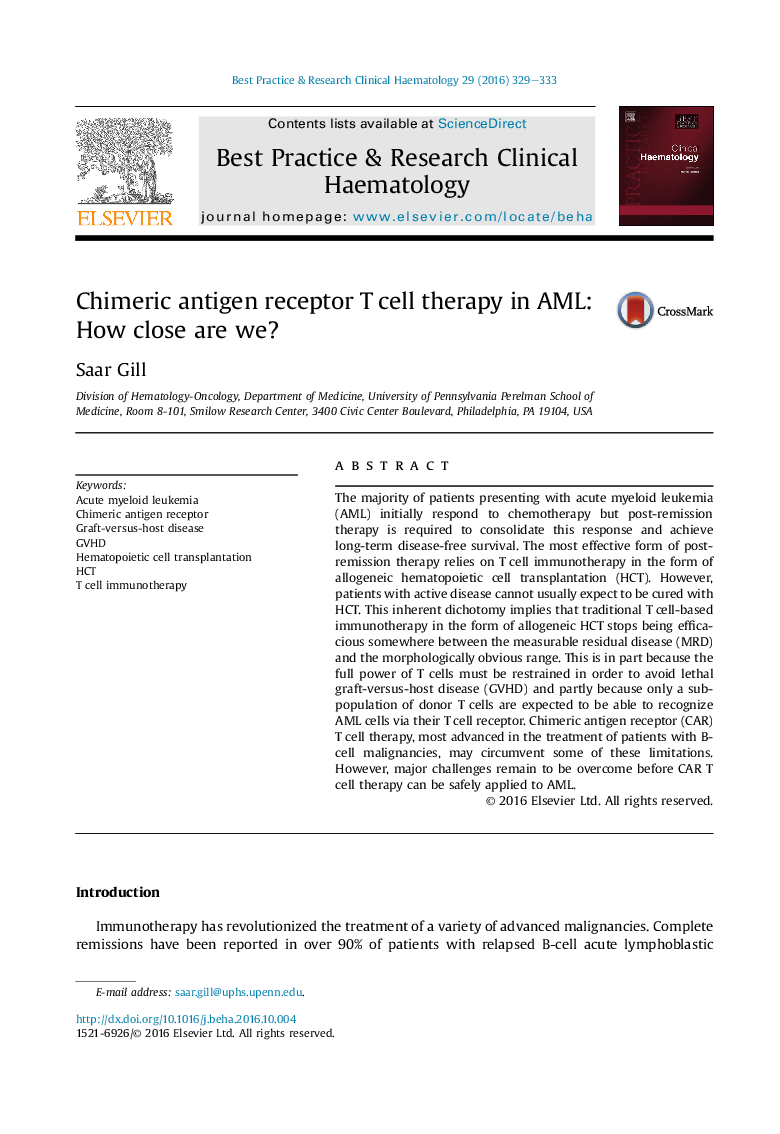| کد مقاله | کد نشریه | سال انتشار | مقاله انگلیسی | نسخه تمام متن |
|---|---|---|---|---|
| 5523890 | 1401396 | 2016 | 5 صفحه PDF | دانلود رایگان |

The majority of patients presenting with acute myeloid leukemia (AML) initially respond to chemotherapy but post-remission therapy is required to consolidate this response and achieve long-term disease-free survival. The most effective form of post-remission therapy relies on T cell immunotherapy in the form of allogeneic hematopoietic cell transplantation (HCT). However, patients with active disease cannot usually expect to be cured with HCT. This inherent dichotomy implies that traditional T cell-based immunotherapy in the form of allogeneic HCT stops being efficacious somewhere between the measurable residual disease (MRD) and the morphologically obvious range. This is in part because the full power of T cells must be restrained in order to avoid lethal graft-versus-host disease (GVHD) and partly because only a sub-population of donor T cells are expected to be able to recognize AML cells via their T cell receptor. Chimeric antigen receptor (CAR) T cell therapy, most advanced in the treatment of patients with B-cell malignancies, may circumvent some of these limitations. However, major challenges remain to be overcome before CAR T cell therapy can be safely applied to AML.
Journal: Best Practice & Research Clinical Haematology - Volume 29, Issue 4, December 2016, Pages 329-333